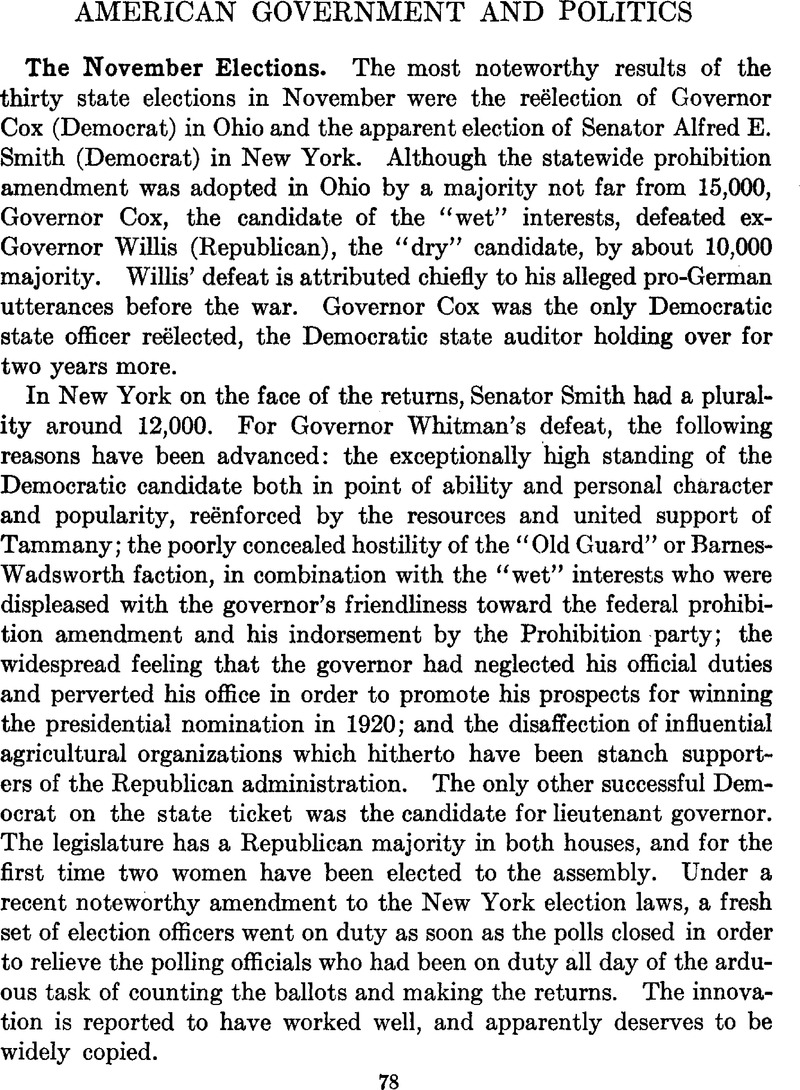Published online by Cambridge University Press: 02 September 2013

1 These figures are based upon the “Unofficial List” of members of the 66th Congress, compiled by the clerk of the house, dated November 14. A few seats are likely to be contested.
The Republican gains were distributed as follows: six in Ohio, four in Indiana and Kansas, three in New York, Pennsylvania, Missouri and Nebraska, two in Colorado, and one in California, Delaware, Illinois, Kentucky, Maryland, Michigan, New Mexico, Rhode Island, Washington and West Virginia. The Democratic gains were made in the following states: five in New York, three in New Jersey, two in Pennsylvania, and one in California, Nevada, and Oklahoma.
The large Democratic gain in New York was partly due to the fusion between Republicans and Democrats in certain New York City districts in order to prevent the election of Socialist candidates.
Comments
No Comments have been published for this article.